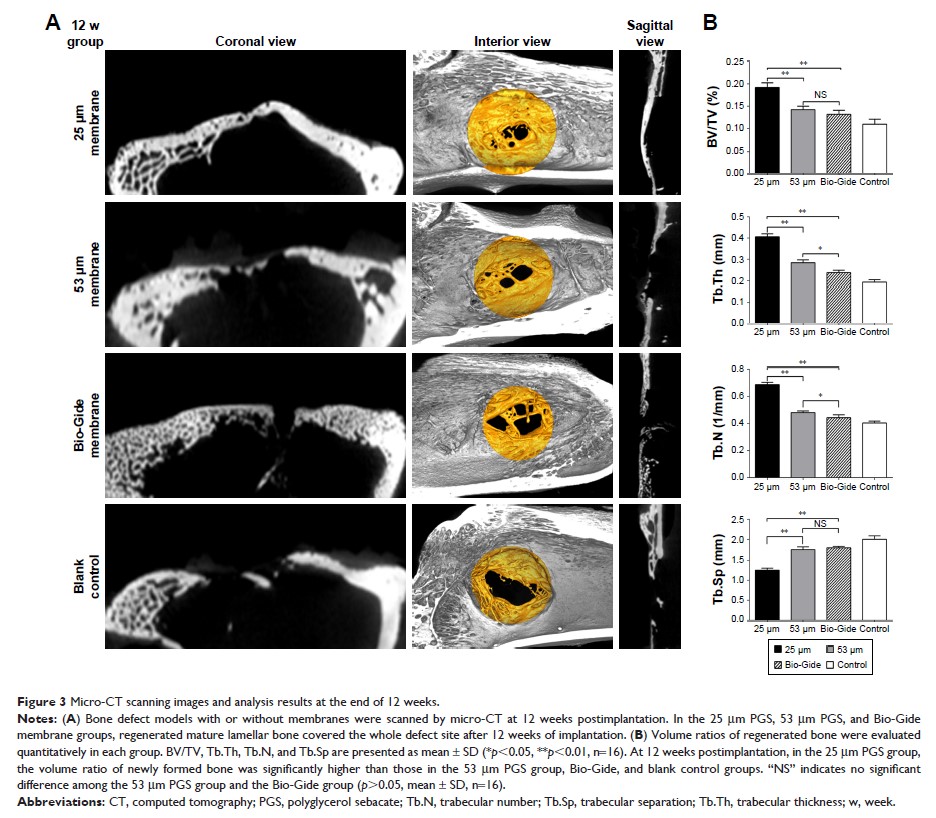9 0 8 1 0
论文已发表
注册即可获取德孚的最新动态
IF 收录期刊
- 2.6 Breast Cancer (Dove Med Press)
- 3.9 Clin Epidemiol
- 3.3 Cancer Manag Res
- 3.9 Infect Drug Resist
- 3.6 Clin Interv Aging
- 4.8 Drug Des Dev Ther
- 2.8 Int J Chronic Obstr
- 8.0 Int J Nanomed
- 2.3 Int J Women's Health
- 3.2 Neuropsych Dis Treat
- 4.0 OncoTargets Ther
- 2.2 Patient Prefer Adher
- 2.8 Ther Clin Risk Manag
- 2.7 J Pain Res
- 3.3 Diabet Metab Synd Ob
- 4.3 Psychol Res Behav Ma
- 3.4 Nat Sci Sleep
- 1.9 Pharmgenomics Pers Med
- 3.5 Risk Manag Healthc Policy
- 4.5 J Inflamm Res
- 2.3 Int J Gen Med
- 4.1 J Hepatocell Carcinoma
- 3.2 J Asthma Allergy
- 2.3 Clin Cosmet Investig Dermatol
- 3.3 J Multidiscip Healthc

用聚甘油癸二酸酯制备的微孔弹性体膜片可改善兔模型中的引导骨再生
Authors Jian B, Wu W, Song Y, Tan N, Ma C
Received 25 October 2018
Accepted for publication 14 February 2019
Published 15 April 2019 Volume 2019:14 Pages 2683—2692
DOI https://doi.org/10.2147/IJN.S192167
Checked for plagiarism Yes
Review by Single-blind
Peer reviewers approved by Dr Govarthanan Muthusamy
Peer reviewer comments 2
Editor who approved publication: Dr Mian Wang
Purpose: We aimed
to fabricate guided bone regeneration (GBR) membrane using polyglycerol
sebacate (PGS) and investigate the impact of scaffold pore size on
osteogenesis.
Materials and methods: PGS
microporous membrane was fabricated by salt-leaching technique with various
pore sizes. Twenty-eight male New Zealand rabbits were randomly divided into
four groups: 25 µm PGS membrane, 53 µm PGS membrane, collagen
membrane, and blank control group. Subsequently, standardized and
critical-sized tibia defects were made in rabbits and the defective regions
were covered with the specifically prepared membranes. After 4 and 12 weeks of
in vivo incubation, bone samples were harvested from tibia. Micro-computed
tomography scanning was performed on all bone samples. A three-dimensional
visible representation of the constructs was obtained and used to compare the
ratios of the ossifying volume to total construct volume (bone volume to tissue
volume [BV/TV]) of each sample in different groups; then, bone samples were
stained with H&E and Masson’s trichrome stain for general histology.
Results: At
4 weeks, the BV/TV in the 25 µm PGS group was found higher than that
in the 53 µm PGS and collagen groups. At 12 weeks, the bone defect
site guided by the 25 µm PGS membrane was almost completely covered by the
new bone. However, the site guided by the 53 µm PGS membrane or collagen
membrane was covered only most of the defects and the left part of the defect
was unoccupied. Histological observation further verified these findings.
Conclusion: We thus
concluded that the 25 µm PGS membrane played an advantageous role during
4–12 weeks as compared with those earlier degraded counterparts.
Keywords: bone
defect, biological membrane, degradation, salt-leaching technique, tibia
